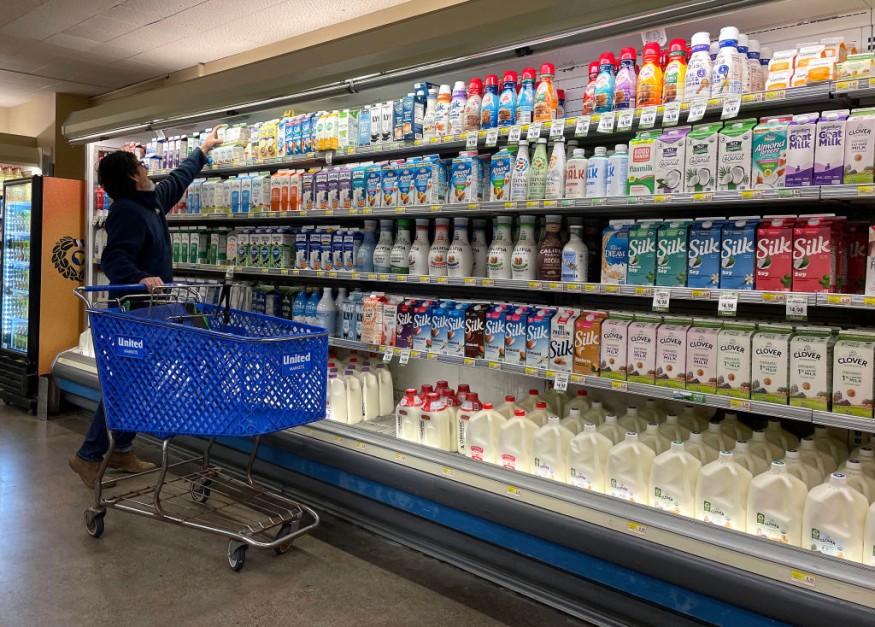US Soaring Prices in Restaurants and Car Repairs Contribute to November Surge
Inflation in the United States remained virtually constant last month, owing to falling gas costs. However, underlying pricing pressures from apartment rents, restaurant meals, vehicle insurance, and a variety of other services remained persistently high.
Last month's inflation figures arrived only one day before the Federal Reserve concludes a two-day policy meeting and announces its latest interest rate choices. The Fed is likely to leave its main interest rate unchanged for the third time in a row on Wednesday.

Most analysts predict that the rate of price rises will continue to reduce in the coming months. Though the decrease may be rocky, inflation should be significantly closer to the Fed's 2% objective by the end of 2024. Wages and rental costs, among other things, are progressively rising.
Government Highlights Mixed Inflation Trends in November
According to the government, substantially cheaper gas kept total costs down in November, up only 0.1% from October. In comparison to a year earlier, inflation fell to 3.1%, down from a 3.2% year-on-year increase in October.
However, prices in the enormous service sector continued to rise at an uncomfortably rapid pace. Core prices, which exclude volatile food and energy expenses and are considered a better predictor of inflation, climbed 0.3% from October to November, somewhat higher than the previous month's 0.2% gain. Core prices were up 4% year on year, the same as in October.
In the next months, American consumers will most likely continue to enjoy respite in the shape of lesser price hikes. And in certain sectors, especially physical goods costs, many products are actually becoming cheaper rather than simply growing more slowly.
Last month, the prices of both furniture and appliances fell. They are now, on average, less expensive than they were a year ago. Clothing costs, which decreased from October to November, are only up 1.1% year on year. And, while used car sales increased 1.6% last month, they are down 3.8% year on year.
However, housing expenses were once again one of the major elements driving inflation. Rental costs increased 0.5% from October to November, and are up 6.9% year on year. Although these gains are lower than in recent years, they are still significantly higher than they were before the epidemic.
Simultaneously, new apartment complexes are flooding the market, and real-time data providers such as Zillow and ApartmentList reveal that rent growth for new units is plummeting. As these costs are factored into the government's assessment, they should assist to keep inflation under control.
Slowing Wage Growth and Changing Economic Sentiment
Wage growth is slowing, even if it is still strong. According to the November jobs data, they gained 4% from a year ago, but that's down from a peak of almost 6% nearly two years ago. Slower pay growth should reduce inflationary pressures since firms would not need to raise prices as much to offset labor expenses.
Prices are dropping - or perhaps falling - for some of the things that have been the most expensive on consumers' budgets. Gas costs, for example, fell 6% between October and November. According to AAA, the national average has plummeted from $5 a gallon roughly a year and a half ago to $3.15 a gallon as of Monday.
In addition, grocery costs increased by 0.1% in November and are just 1.7% higher than a year earlier. Prices for bread, meat, chicken, and pork all fell.
Despite sustained job growth, a low unemployment rate, and falling inflation, surveys reveal that most Americans are pessimistic about the economy. However, the prognosis for consumer prices has lately brightened.
According to a Federal Reserve Bank of New York study, Americans now expect inflation to rise only 3.4% in the coming year. Expected inflation is practically down to pre-pandemic levels, with the lowest level since the spring of 2021 - down from a peak of 6.8% in June 2022. (Typically, inflation predictions surpass actual inflation statistics.)
Lower inflation expectations are significant since they typically come true. If Americans, for example, expect inflation to grow faster, they would often modify their own behavior appropriately. Most importantly, they may seek - and obtain - greater compensation, putting pressure on their employers to hike prices even further.
Fed policymakers have frequently cited low inflation expectations as one of the reasons they may be able to pull off a rare "soft landing," in which inflation falls down to 2% without precipitating a major recession.
Related Article : Biden's $4.8 Billion Student Loan Forgiveness Plan Offers New Beginnings for Thousands
© 2025 MoneyTimes.com All rights reserved. Do not reproduce without permission.











